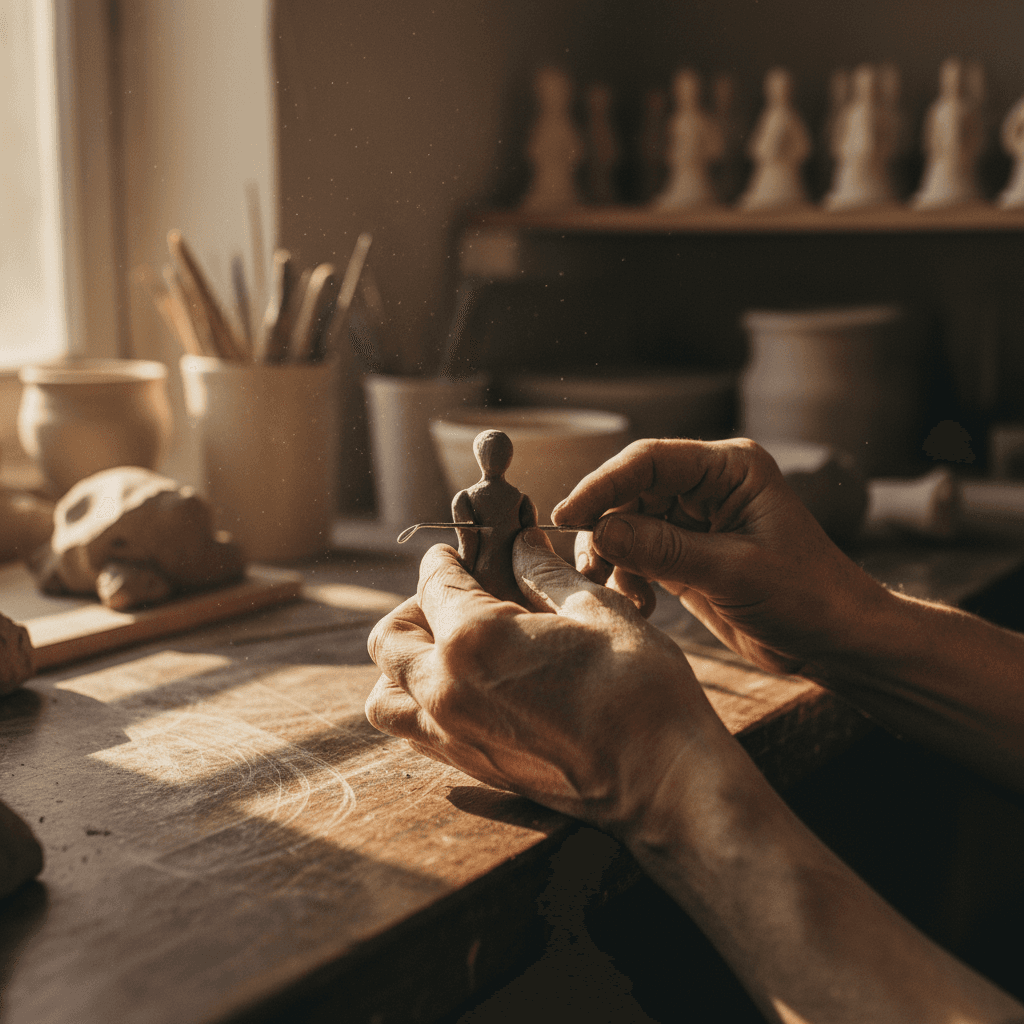When Deeds Become the Measure of Intention

Let your hands be the proof of your intention. — Leonardo da Vinci
From Thought to Touch: Embodied Intention
This maxim, often linked to Leonardo, insists that credibility begins where words end—at the threshold of action. Intention gains moral weight only when it takes form in the world, and in the Renaissance imagination the hand was the mind’s most persuasive ambassador. Thus the saying does not diminish thought; rather, it argues that thought culminates in making, where ideas become accountable.
Leonardo’s Workshop Ethic: Learning by the Hand
Carrying this further, Leonardo’s training in Verrocchio’s Florentine workshop modeled knowledge as something done before it was said. Apprentices sketched, mixed pigments, cast bronze, and repaired tools—habits that braided reflection with craft. Vasari’s *Lives* (1550/1568) emphasizes how such bottega discipline forged artists whose skill could be read in their workmanship. In that milieu, a promise without a prototype was merely noise.
Gesture as Evidence: Reading The Last Supper
Leonardo painted intention into hands as eloquently as into faces. In *The Last Supper* (1495–1498, Santa Maria delle Grazie), Christ’s open palms signal offering; Judas’s clenched fist tightens around the purse; Peter’s hand grips a knife, lean and decisive; Thomas raises a probing finger—foreshadowing his later doubt (John 20:24–29). As Leo Steinberg argues in *Leonardo’s Incessant Last Supper* (2001), these gestures do not decorate the scene; they declare inner motives outwardly, making the visible hand the proof of the hidden heart.
Anatomy and Experiment: Hands in Science and Craft
Moreover, Leonardo’s anatomical drawings of the hand (c. 1510–1511, Royal Collection, Windsor) map bones and tendons with engineerly clarity, aligning physiology with mechanics. The same pages converse with the working models of pulleys, gears, and flyers scattered through the *Codex Atlanticus*: study becomes tool-making, and tool-making refines study. Even his left-handed hatchings and mirror script are embodied signatures—his very process leaving a manual proof that the intellect was at work.
The Moral of Making: Accountability Through Action
Translating this ethos beyond art, the measure of integrity is the say–do ratio. Management research on behavioral integrity notes that trust grows when stated values match enacted behavior (Simons, Organization Science, 2002). In other words, hands that follow through validate intention more persuasively than declarations ever could. Through consistent execution, intention ceases to be a claim and becomes a character.
Modern Applications: Design, Care, and Civic Work
Consequently, many disciplines institutionalize proof-by-doing. Design teams prototype early and often—IDEO’s “show, don’t tell” culture makes sketches and models the argument (Kelley & Littman, *The Art of Innovation*, 2001). In medicine, checklists convert concern for safety into repeatable acts, reducing errors at the bedside (Atul Gawande, *The Checklist Manifesto*, 2009). Community life follows the same logic: cleanup days, mutual aid, and tutoring hours make civic intent legible and contagious.
Practicing Proof: Turning Intent into Tangible Steps
Finally, to let your hands prove your intention, design in small verifiable increments. State the commitment, build the first unit, and deliver it on a clock—then improve it in the open. Keep a brief log of promised versus completed tasks to shrink the say–do gap, and favor repairs before additions so stewardship precedes expansion. In this cadence, intention steadily becomes evidence, and evidence becomes trust.